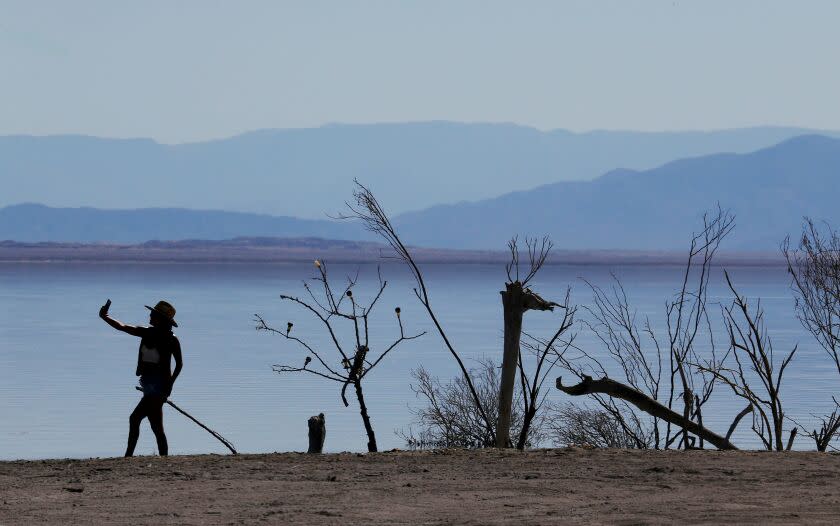Letters to the Editor: The Salton Sea will vanish as long as the sun continues to shine

To the editor: Brent M. Haddad and Robert Glennon got it wrong in their op-ed article, "Restore the Salton Sea not to its former size but to its role in the ecosystem." The Salton Sea can't be saved unless they can stop the sun from shining.
There is no climate equilibrium condition that will allow the lake's continued existence without massive human intervention. It was a desert dry lake bed before 1905, when the Colorado River breached a dike and flooded the Salton Sink for two years. Farming in the area only commenced after the creation of this huge lake.
As the Colorado River becomes more stressed, the farmers in the Imperial Valley and inhabitants of San Diego will have to contend with lower water deliveries. The lake's water has been evaporating, causing it to become saltier and smaller.
Interestingly, salt water evaporates more slowly than freshwater. Therefore, desalination will only hasten the shrinkage and the return to the equilibrium condition of a dry salt playa that it was originally. Increasing temperatures due to climate change will accelerate the process.
Demetrius Pohl, Los Angeles
..
To the editor: As the desalination plant proposed by the authors gradually reduces the Salton Sea's salinity to ocean levels by 2033, how do we ensure that the sea will not shrink beyond acceptable levels? Then what does one do with a white elephant of a no-longer-useful desalination plant?
Furthermore, it seems quite unrealistic to rely on voluntary contributions of precious Colorado River water from the Imperial Valley Water District to replenish the sea's water lost to natural evaporation.
Therefore, although it brings its own problems, connecting the Salton Sea to the Sea of Cortez would seem to enable the organic processes of balancing salinities between the ocean and the Salton Sea, without interruption or sudden termination.
Ivan Strenski, Palm Springs
..
To the editor: The bottom line is that more freshwater is needed. Reallocating existing water does not resolve the long-range problem.
About $78 billion for desalinization? What would the value of a thriving Salton Sea environment be? What would be the cost of the desertification of the Coachella Valley?
Richard Melniker, Los Angeles
This story originally appeared in Los Angeles Times.

